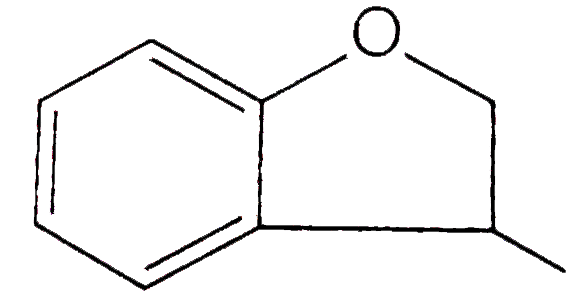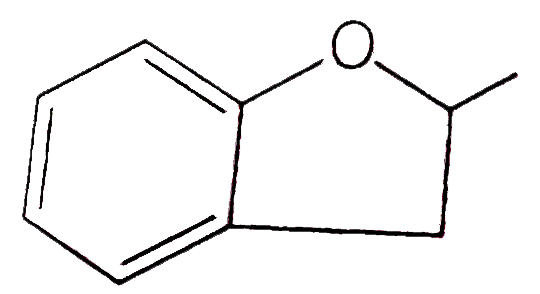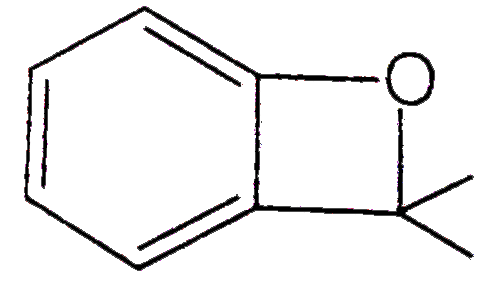A compound D(C8H10O) upon treatement with alkaline solution of iodine gives a yellow precipitate. The fibtrate on acidification gives a white solid E(C7H6O2). Write the structures of D,E and explain the formation of E.
Step by step video & image solution for A compound D(C_(8)H_(10)O) upon treatement with alkaline solution of iodine gives a yellow precipitate. The fibtrate on acidification gives a white solid E(C_(7)H_(6)O_(2)). Write the structures of D,E and explain the formation of E. by Chemistry experts to help you in doubts & scoring excellent marks in Class 12 exams.
Updated on:21/07/2023Topper's Solved these Questions
Similar Questions
A compound D(C6H10O) upon treatment with alkaline solution of iodine gives a yellow precipitate. The filtrate on acidification gives a white solid E(C7H6O2). Write the structures of D and E and explain the formation of E.
View SolutionA compound A (C8H10O) upon treatment with alkaline solution of iodine gives a yellow precipitate. The filtrate on acidification gives a white solid B (C7H6O2). Write the structures of A and B.
View Solution
Knowledge Check
An organic compound A (C9H10O) does not evolve any gas on reatement with Na-metal but on hydrolysis with dil. H2SO4 gives B(C9H12O2) which on further treatement with alkaline solution of iodine gives an yellow precipitate. Also A on treatment with excess of conc. HBr gives C(C9(H11OBr) as the major product. C on further treatment with C2H5ONa/C2H5OH followed by acidification of product gives D (an isomer of A). D on ozonolysis followed by work-up with dimethyl sulphide gives ortho hydroxyl benzaldehyde as one of the product. Answer the following three questions based on the above information.
The most likely structure of starting compound A isA B
B C
C D
D
An organic compound A (C9H10O) does not evolve any gas on reatement with Na-metal but on hydrolysis with dil. H2SO4 gives B(C9H12O2) which on further treatement with alkaline solution of iodine gives an yellow precipitate. Also A on treatment with excess of conc. HBr gives C(C9(H11OBr) as the major product. C on further treatment with C2H5ONa/C2H5OH followed by acidification of product gives D (an isomer of A). D on ozonolysis followed by work-up with dimethyl sulphide gives ortho hydroxyl benzaldehyde as one of the product. Answer the following three questions based on the above information.
The statement that is true regarding A to D isAit oxygen of A is labelled by .18O,D will retain .18OBIf A is hydrolyzed with H2O18/H+, B will have .18O on phenyl ringCA can show both enantiomersim and diasterecomerismDB can show both enantiomerism as well as diasterecomerism.An organic compound A (C9H10O) does not evolve any gas on reatement with Na-metal but on hydrolysis with dil. H2SO4 gives B(C9H12O2) which on further treatement with alkaline solution of iodine gives an yellow precipitate. Also A on treatment with excess of conc. HBr gives C(C9(H11OBr) as the major product. C on further treatment with C2H5ONa/C2H5OH followed by acidification of product gives D (an isomer of A). D on ozonolysis followed by work-up with dimethyl sulphide gives ortho hydroxyl benzaldehyde as one of the product. Answer the following three questions based on the above information.
Which of the following statement regarding B is correct?AB is an optically inactive substanceBB is an optically active substance with same configuration as that of ACB is an optically active substance with opposite configuration to that of A.DA pure enantiomer of "A" will produce, on hydrolysis reaction, a racemic mixture of B
A compound (D)(C8H10O) upon treatement with alkaline solution of iodine gives a yellow precipitate. The filterate on acidification gives a white solid (E)(C7H6O2). Write the structures of (D) and (E), and explain the formation of (E).
View SolutionAn organic compound (A) , C_(8)H_(10)O. The compound (B) upon treatment of alkaline solution of iodine gives a yellow precipitate. The filtrate. The filtrate on acidification gives a while solid ("C") , C7H6O2. Give structures of A, B, C and explain the reactions involved.
View SolutionAn organic compound A (C7H6Cl2) on treatment with NaOH solution gives another compound B (C7H6O). B on oxidation gives and acid C (C7H6O2) which on treatment with a mixture of conc. HNO3 and H2SO4 gives a compound D (C7H5NO4). B on treatment with conc. NaOH gives a compound E (C7H8O) and C6H5COONa. Deduce the structures of [A], [B], [C], [D] and [E].
View SolutionAn aromatic compound A of the molecular formula C8H10O on reaction with iodine and dilute NaOH gives a yellow precipitate . The structure of the compound is expected to be:
View SolutionCompound (A) C8H6O2 on treatment with aq. NaOH followed by acidification gives (B) C8H8O3 which on oxidation gives benzoice acid only :
View Solution
